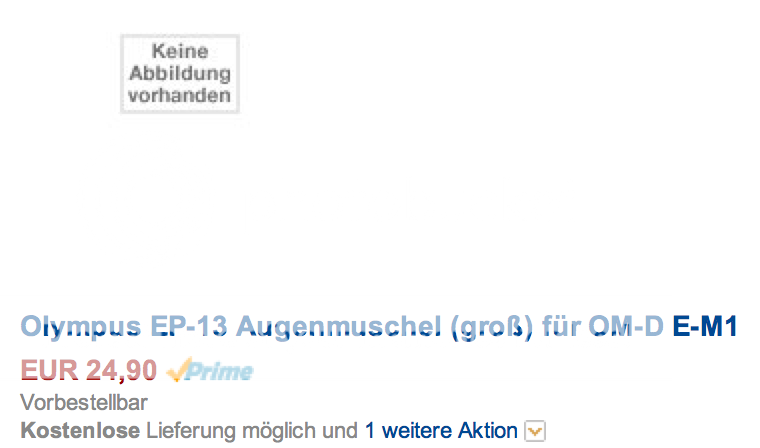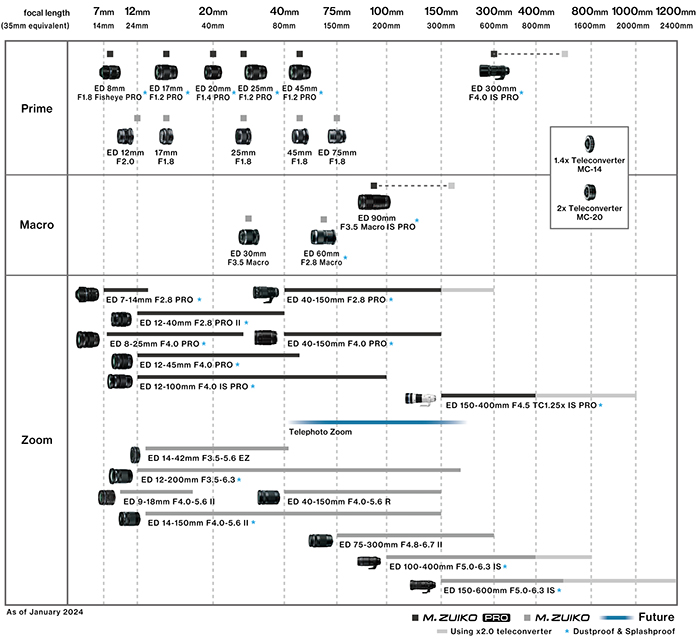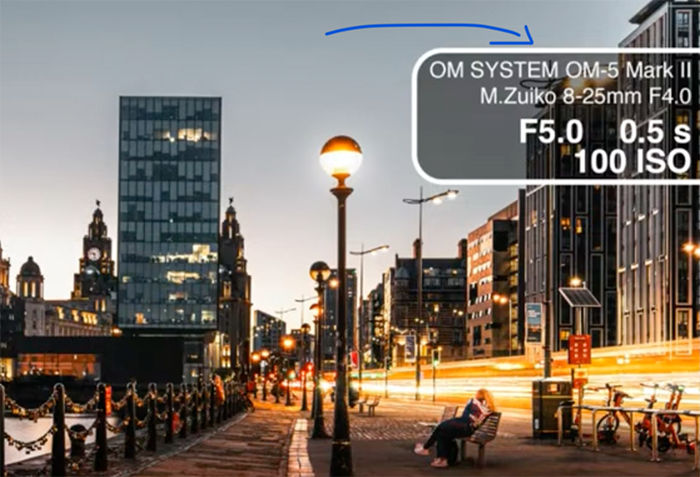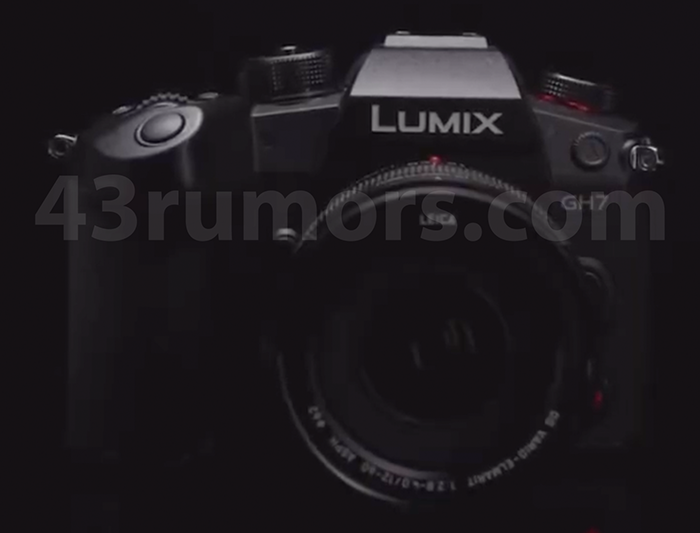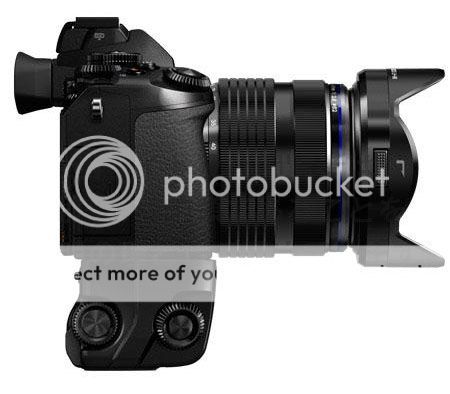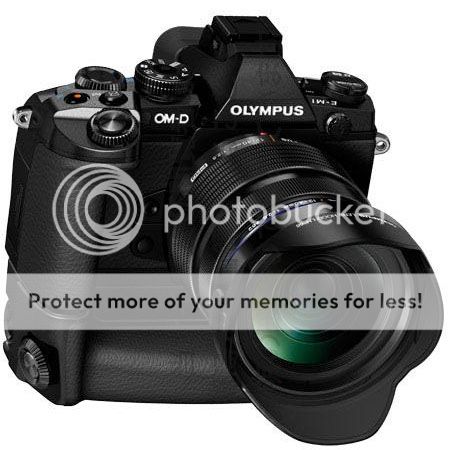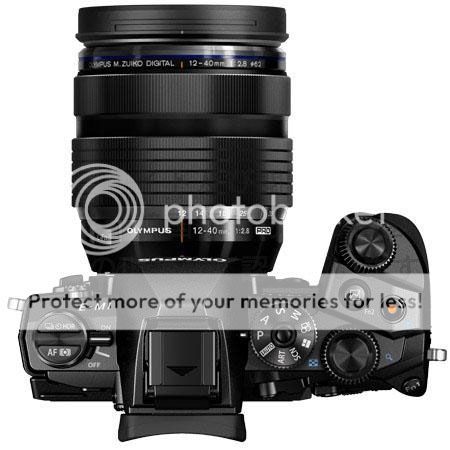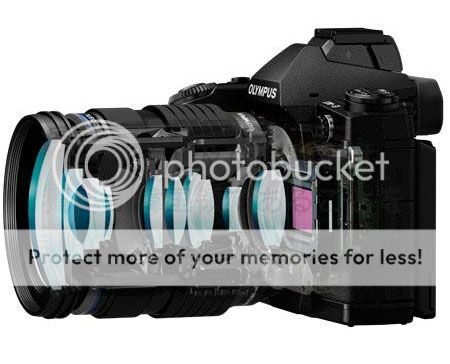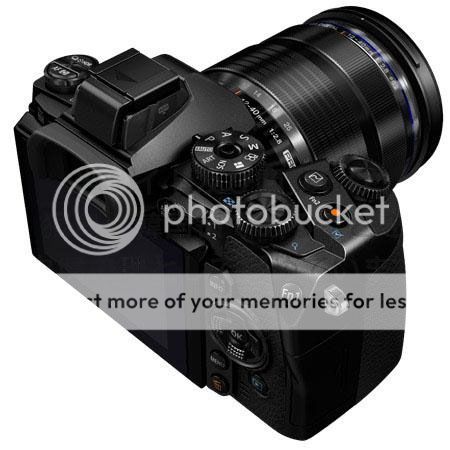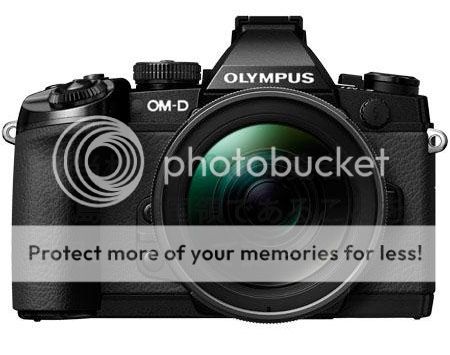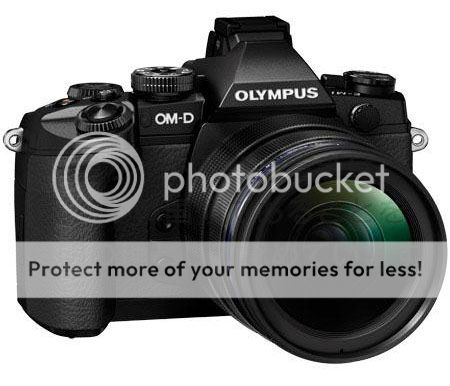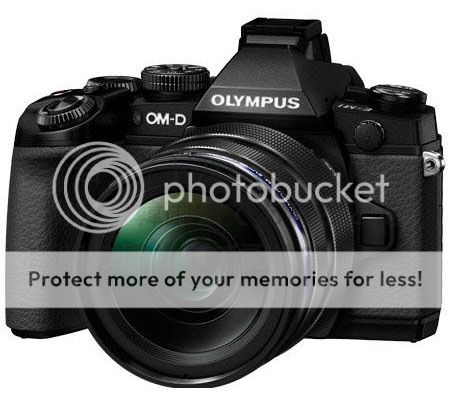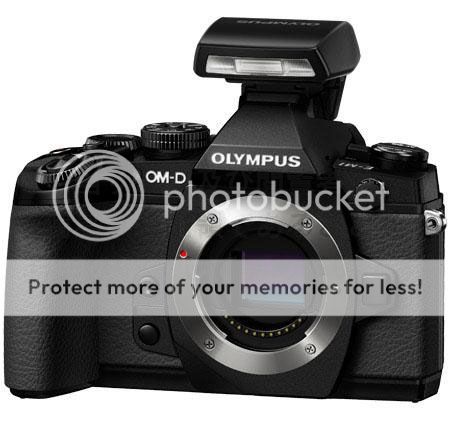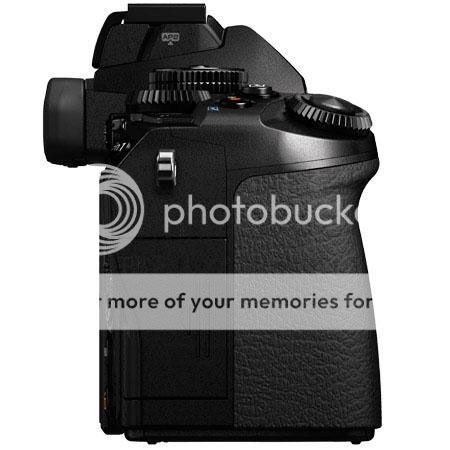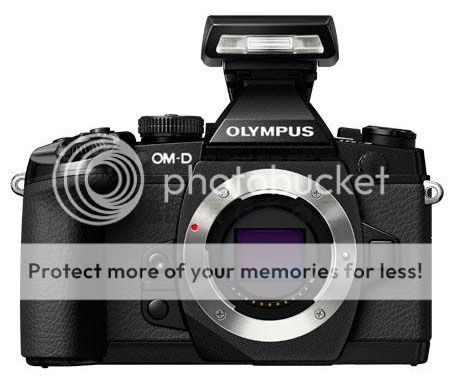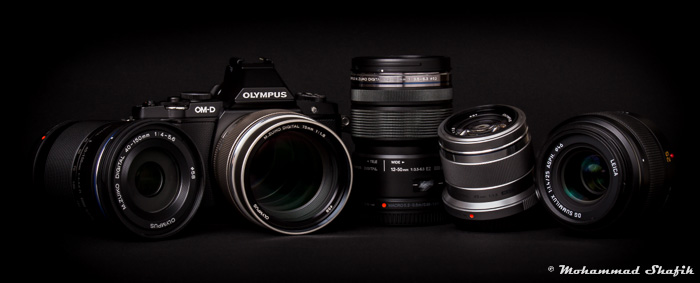 |
| My current MFT family, from left: 40-150R, OMD + 75 f/1.8, 12-50, 45 f/1.8, 25 f/1.4 |
Hello everyone, allow me to introduce myself, my name is Mohammad Shafik, and I usually go by “mshafik” on the internet. I consider myself as an advanced amateur photographer, i.e. I don’t take photos for a living, I only take them for my own pleasure. I am a co-author in a humble blog called “betterfamilyphotos.com” created by Mic Ty. I found his blog a few years back when I was learning about lighting, I started commenting and having discussions with Mic, one thing led to another, and I am now Mic’s co-author on the blog. He represents the Nikon camp, and I used to represent the Canon camp, until almost a year ago, when I dumped all my Canon gear and switched to MFT for good.
And this brings us to the topic of this post, I initially sent Ale a couple of posts I’ve written that describe my switch from FF to MFT in full detail (it’s quite an interesting read by the way), but when Ale requested me to write a guest post and introduce myself, I didn’t know what to talk about, especially since the full story is quite long (you’ll notice, I write a lot, and use parentheses a lot, too). So I let the idea form in my head over a few weeks, until I finally came up with this post, which summarizes the main highlights of living with a MFT system after spending a few years using Canon crop and full frame cameras.
For those who like a bit of a nice, long story over a cup of hot chocolate, here are the links:
Part 1- The Truth Behind The Migration
Part 2- A Tale Of Seven Cameras And One Subject
THE CANON HISTORY
On with the post then, I started learning photography and lighting seriously five years ago, my motive was to have a high quality photo record of my first born, and the Sony T10 P&S wasn’t doing her justice. So I started learning with the then-famous Canon G11, a couple of Canon speedlites (430EX & 580EX) and several lighting modifiers. The resulting pictures were ok, but not as good as I wanted, and since I was in the learning phase, I was getting familiar with DSLRs, lenses, shallow DOF, quick focusing, focus tracking, shutter lag, etc… Once my girl started moving faster than my G11 could lock focus, I dumped the G11 and entered the DSLR world.
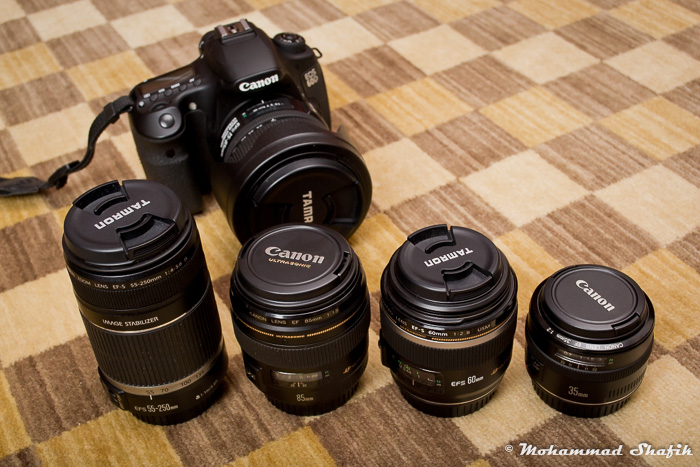 |
| My APS-C family, from left: 55-250, 85 f/1.8, 60 f/2.8 Macro, 35 f/2, back: 60D + 15-85 |
I was biased towards Canon because of the flashes I already had, and because the Canon 550D (T2i for US folk) was just announced and had brilliant image quality. I bought a brand new 550D and three lenses: 18-55 kit, 55-250, 50 f/1.8. Over the time, I replaced the 18-55 with the excellent 15-85, the 50 f/1.8 with the 35 f/2, and later added the 60 Macro and the 85 f/1.8. I was hooked to primes. The quality, the fast aperture and the shallow DOF were addictive. And for some reason, I enjoyed picking just one prime and using it for a full day of photography, it helped me concentrate on the composition instead compared to using a zoom, and I got very familiar to some of the famous focal lengths (FF equivalent: 50mm, 85mm, 100mm & 135mm). During this period, I upgraded to a 60D and added a 580EX II speedlite.
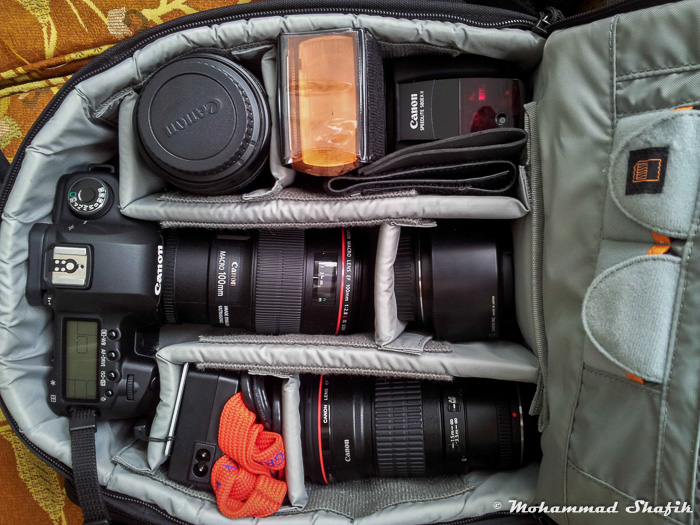 |
| My 5D2 family, top left: 24-105 f/4L, 5D2 + 100L Macro, middle right: 50 f/1.4, bottom: 200 f/2.8L, and a 580 EXII |
After feeling very contempt with my system and the resulting images, I was lured in to the full frame world by Mic, and after some resistance, I finally gave in. I sold the 60D and all of the previous lenses, and bought a brand new 5D Mark II, 24-105 f/4 kit, 50 f/1.4, 100L f/2.8 Macro, and the 200L f/2.8. I bought the 5D2 two days after the 5D3 was announced, and I knew I would never pay such money for a camera body, funny how things work out in life. Despite being perfectly happy with the 5D2, I lusted continuously over the 5D3, until it was discounted to $3,500 ($500 saving), and I sold the 5D2 and bought a brand new 5D3! I also replaced the 430EX with the new 600EX-RT. Are you spotting a pattern here?
 |
| Size comparison, left: 550D + 60 f/2.8 Macro, right: 5D2 + 100 f/2.8L Macro |
During the 4 years of continuous equipment acquisition and upgrades, I never once looked at the full picture, it wasn’t as obvious as I told you here in a couple of paragraphs. I only looked at incremental upgrade costs, and found one reason or another to justify the upgrade. Not only that, I was continuously thinking about a secondary “smaller” camera to complement my FF kit and join me everywhere I went, that’s how I got interested in MFT in the first place.
SWITCHING TO MICRO FOUR THIRDS
Some three months after buying the 5D3, I started realizing how deep I was down the rabbit hole. At that stage I suddenly discovered how much heavier and larger the 5D3 was compared to the seemingly small 60D, the lenses have gotten much bigger and heavier, and I was very careful of my expensive 5D3 falling or getting stolen that I had to lug it everywhere and never leave it unattended.
More importantly, I remembered why I bought a DSLR in the first place, I bought one to get better photos of my family growing old and happy together. So did the more expensive, larger camera gear get me better photos? Yes, to some extent, but where the photos two or three times better as suggested by the price difference? No, they were not. Could I get similar results with a smaller and cheaper system? I wondered. The OM-D EM-5 immediately jumped inside my head, I was interested in this camera since the day it was announced, and I was following with great interest the adventures of Kirk Tuck, Robin Wong and Roger Cicala with small MFT cameras.
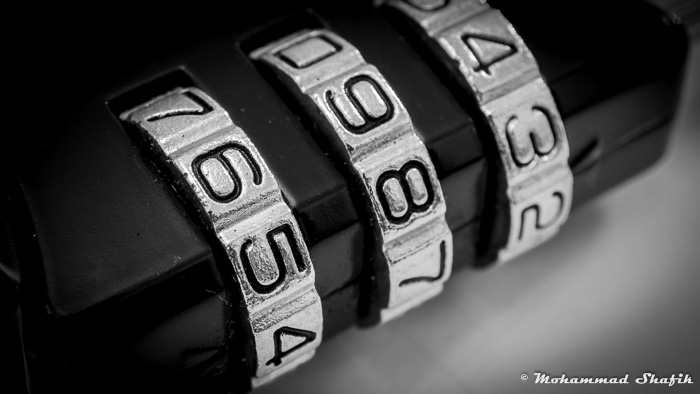 |
| 12-50 kit lens, macro mode, nice and sharp |
Out came the calculator, and I found out that for just the price of my 5D3 body, I could get an OM-D with the 12-50 kit lens, Oly 40-150R, Panaleica 25 f/1.4, Oly 45 f/1.8 and a Sony RX100 and a nice urban looking ThinkTank Retrospective 5 camera bag. WOW, I was shocked at the realization, and once I passed the initial shock, I started weighing in my losses in image quality and DOF.
After checking all the reviews I can find for the camera and the lenses, I found a few RAW files for download, and when I imported them to Lightroom, I was stunned at the quality of the ISO 1600, 3200 and 6400 files, they were better than the 60D, much better in fact, and they handled shadow recovery much more better, without showing the ugly noise patterns Canon users are used to. I was convinced. Next day I started selling all my Canon equipment (body, lenses, flashes, bags, accessories) and ordered the MFT package I mentioned, I added a couple of Wasabi batteries, a couple of small Lowepro Apex bags (one for the OMD with one lens and one for the RX100), a couple of Yongnuo 560EX II flashes and the Olympus FL600R flash (for on-camera TTL bounce flash). I didn’t get the Oly 75 f/1.8 because it was expensive, and I reasoned the 45 would be enough.
This was probably the hardest decision I ever took regarding photography, it was a scary choice for a few reasons. First of all, there is no MFT market in Egypt at all, that means that I would hardly be able to sell any of the MFT equipment I own, unlike the active Canon/Nikon DSLR market, where I could sell or buy gear in a couple of days. The second reason was the shallow DOF difference between FF and MFT, of course I’ve seen a few examples, but I never got a feeling for it until I tried it for myself. And finally, I had no warranty on any of the equipment I’d bought (don’t be shocked, this is normal in Egypt when you buy something from abroad that is not sold locally). That was a huge risk, but it would help me keep my GAS under control, with no easy way to sell my body or lenses, I would be discouraged to keep trying out different camera gear. And gladly everything turned out ok, except for the OM-D’s eye-sensor that doesn’t work, but nevertheless, I was planning to turn it off anyway.
 |
| Older daughter, Oly 45 1.8 wide-open, a very quick two lights setup |
LIVING WITH MICRO FOUR THIRDS
My expectations for the OM-D and lenses were really high, all the reviews were raving about the high quality of the 25 and 45 lenses, and I have to admit, the system has exceeded my expectations, a lot! Gone were the days of lugging heavy camera bags, gone were the days of finding a suitable focus point to place on my subject’s eye, and this was just the start.
 |
| Oly 75 1.8 wide-open, reminds me a lot of the 200L |
A lot of people think that the benefit of a MFT system is just size and weight, which is nothing to scoff at, by the way. But there are a lot of arguments and counter-arguments these days about the demise of MFT, especially with the increasing prices of high-end MFT bodies and lenses, compared to very good DSLRs like the Nikon D7100 for example. To each his own, but in my opinion, I see more advantages to MFT than just size and weight when compared to DSLRs, and yes, I know of the DSLR advantages over MFT, but I will come to that later, so here is what I think are the most important advantages of MFT (and the OM-D EM-5 to a certain extent):
- By far the most understated feature, I am always amazed at how OMD reviews and users don’t mention the auto near-eye detection and focus feature, it is the best feature, ever! It transformed the way I shoot portraits completely, now I never think about moving focus points anymore, I simply compose the picture, and the OMD reliably focuses on the near eye on its own. With more than ten thousand shots now, the success rate is north of 90%, how cool is that?
- No more fiddling with micro focus adjustments, contrast detection focusing found in MFT cameras is more accurate than phase detection focusing found in DSLRs, and as fast or sometimes faster.
- No more complaining about the focus points filling a small part of the frame. No more focus and recompose. On the OMD, there are 35 focusing points by default, positioned in a 7×5 matrix filling 90% of the frame apart from the very extreme edges, and the focus point size can be changed by a single button press. Using the smallest size I can move the smaller focusing point into any of 1100 different positions!
- For some reason most MFT prime lenses are very sharp wide-open, I just checked all the pictures I’ve taken with the 45mm f/1.8, and 70% of the shots are taken wide-open, there is no reason for me to stop-down anymore, unless I need more DOF obviously.
- And that brings me to shutter speed, another understated advantage. With the smaller sensor, there is no need to stop-down the lens to get adequate depth of field (unlike a FF DSLR with shallow DOF even at f/4), so I can easily shoot at higher shutter speeds and lower light conditions without resorting to high ISO.
- The EVF shows real-time exposure and color effects, when I shoot in B&W, I see everything in B&W. I find the live histogram, blocked shadows and clipped highlights very useful. The EVF can show horizontal and vertical levels, and most importantly, it plays back the picture in the finder without removing my eye. Of course the Sony DSLTs are embracing the EVF as standard.
- OMD has the best AWB I have ever seen, even under tungsten lighting, a first for me. Colors are also excellent, even under mixed lighting.
- 5-axis in body image stabilization works a treat, I find myself shooting at much lower shutter speeds and lower ISOs than I was used to on the 5D3.
- Noise performance is incredible for such a small sensor, easily as good as current APS-C sensors, and compared to Canon sensors, they have incredible tolerance to shadow recovery.
- Olympus colors, now I understand where did this phrase come from, I really like the colors I am getting out of this camera, skin tones and white balance are very good.
- People don’t get intimidated like when I pull out the 5D3 with the 200L and put on the lens hood. And despite only shooting my kids, everyone around me got alert whenever the pointy end passed in front of them.
 |
| Mixed lighting with totally different colors, AWB, 25 1.4 wide-open |
That said, I find that the future of MFT is brighter than the declining sales numbers suggest, and several of my friends are already selling their DSLRs and getting either a MFT system, a NEX system, or a Samsung NX system.
On the other hand, these are the scenarios where I believe DSLRs are still king:
- Sports and action: my OMD sucks at tracking any moving subject, no matter how fast or what I do, unlike the DSLRs with their phase detection systems. I sincerely hope the EM-1 changes this.
- Wildlife and super telephoto lenses: high-end DSLRs are more robust when exposed to the elements, and there are lots of choice in the super telephoto category.
- High megapixel count: cameras like the D800E with their 36 megapixels are essential to some types of commercial photographers.
- Really shallow DOF: no way a MFT could match the FF DSLRs regarding extreme shallow DOF, things like full-length subject isolation are considered FF territory.
- Low noise: FF DSLRs have excellent noise performance at high ISOs, I never thought twice about shooting ISO 3200 on my 5D3, even in day light, it is similar to how I treat ISO 800 on my OMD.
- Dual memory cards for backup and redundancy.
 |
| 5D3 + 50 1.4 wide-open, you can’t get this kind of luscious bokeh at these viewing angles with MFT |
REFLECTIONS ON MY 5 YEARS OF PHOTOGRAPHY EQUIPMENT
To be honest, sometimes I miss my 5D cameras. When I see a picture with deliciously shallow DOF, I miss it, when I want to track one of my kids running, I miss it. But once I hold one in my hands and feel how bulky it is, and look through the OVF to find the view shaky with no image stabilization, I am reminded how much I became spoiled with my lovely OMD.
Despite that, I always missed the 200 f/2.8L look on FF, it was my absolute favorite lens on FF, people told me the 75mm f/1.8 is the lens to get to satisfy this need. After a long resistance, I finally bit the bullet and ordered the Oly 75mm f/1.8. I received mine a couple of weeks ago, and I only had one chance to shoot with it. I came back loving every single image, which rarely happens. I spent a long time zooming to 100% on every picture, and getting amazed at how sharp that lens is, seriously, I opened some of my 200L files, and I could not tell which one is sharper, and that is high praise. I can’t wait to shoot more with it, expect a raving review.
 |
| Don’t you love the rendering of this lens? Panaleica 25 1.4 @ f/1.8 |
Back to those DSLRs, do I really miss them? Did my pictures become worse? Did I lose the shallow DOF? The answers are: rarely, no and not really. Have a look at these two posts where I compare similar pictures shot with different cameras:
A Tale of Seven Cameras, And One Subject
Different Cameras & Lenses, Same Point of View
What do you think? When I look back at my images from 5 years ago, I find that since I started using a DSLR and a fast prime lens, most of the images are satisfying and good enough. There is the odd shallow DOF image or well lit image every now and then, but I would say that MFT can do 90% of what my FF cameras did for me, and then some more, that Panaleica renders files in a very attractive way.
 |
| V‰sterbron Bridge, Stockholm, 12-50 hand-held, in a moving boat |
This has been a long post, and it’s time to draw a conclusion. The moral of the story is that all modern cameras can produce great pictures with good enough lenses, no matter how cheap they are. Moreover, MFT cameras do bring a lot of advantages for both the beginner and professional alike, for those shooting streets or traveling around the world. And with the excellent MFT lens lineup and sensors, competing APS-C mirrorless cameras will take some time to catch up, with all their different lens standards (ex. Sony NEX, Fuji X, Samsung NX and Canon EOS M).
It’s time to say goodbye, I hope you enjoyed this post, and I leave you with some more images and some links to my other MFT posts. Keep the comment coming.
RELATED LINKS
Olympus OM-D: First Impressions & Comments on DOF
Macro Fun @ Home (Olympus 12-50)
Phone Photography, Mirorrless Happiness And The OM-D EM-6
Review: Panasonic Leica 25mm f/1.4 Summilux
OM-D, Bits & Pieces
The OM-D Visits Europe – Part 1 (Stockholm)
The OM-D Visits Europe – Part 2 (Poland)
Yongnuo RF-603 + Olympus OM-D
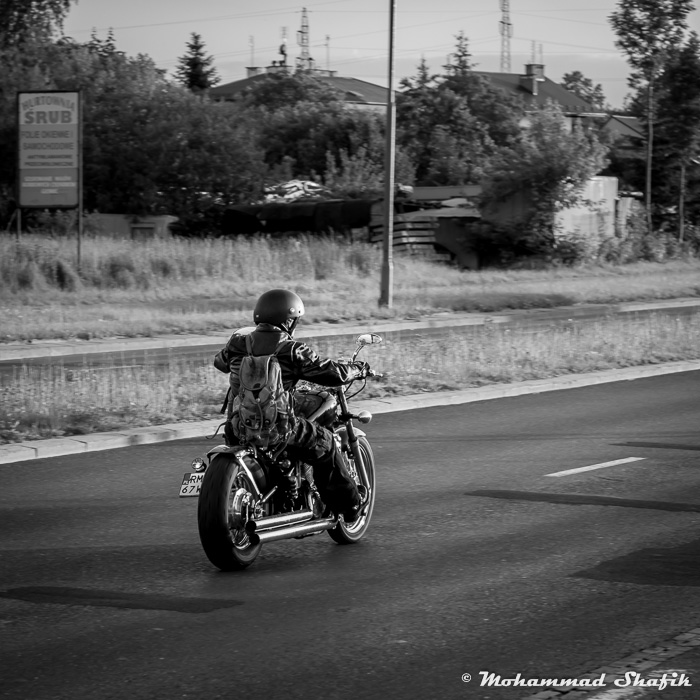 |
| Motorcycle, 45 1.8 @ f/2.8 |
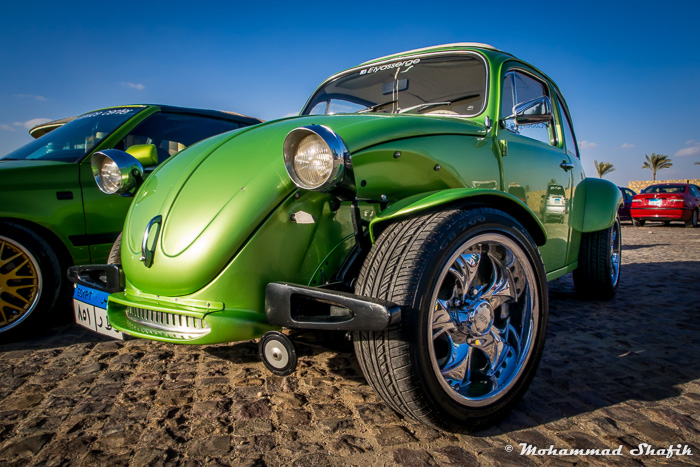 |
| Manicured Beetle, 12-50 |
 |
| Kids in The Sand, 40-150R @ 89mm |
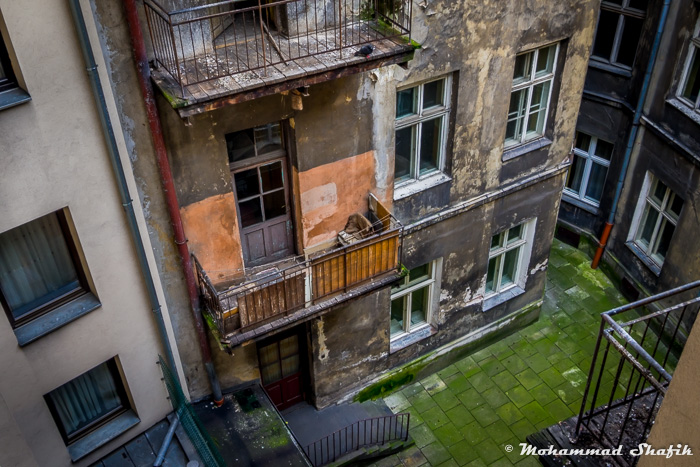 |
| Back Window View, 12-50 |
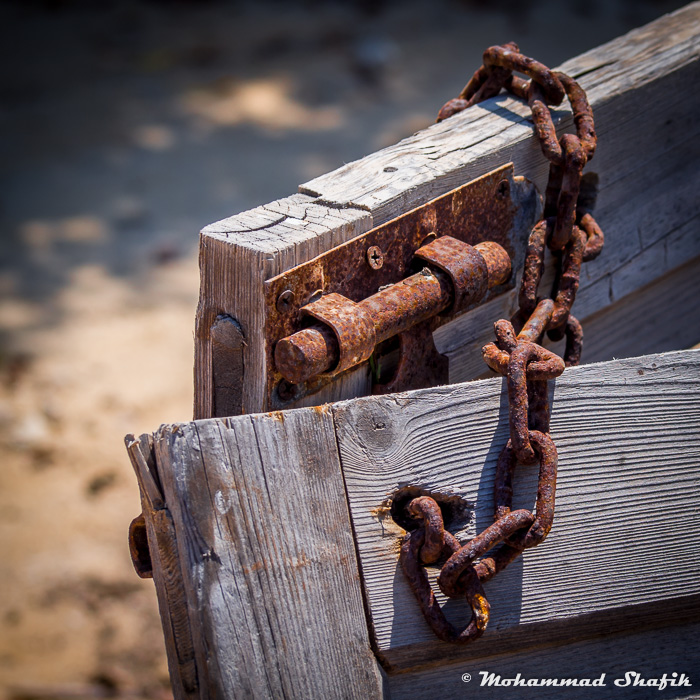 |
| Rusty Lock, 40-150R @ 70mm |
